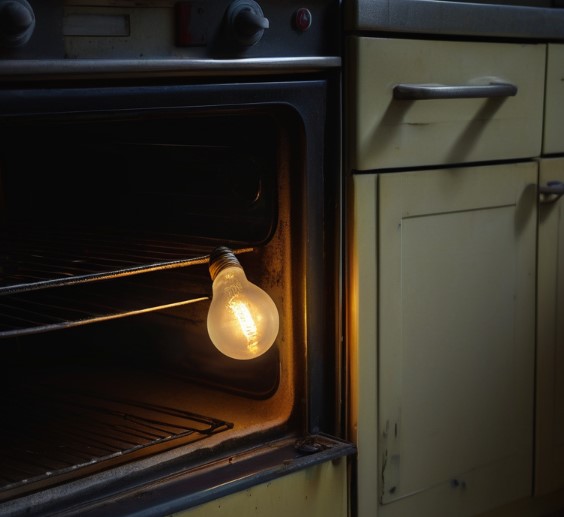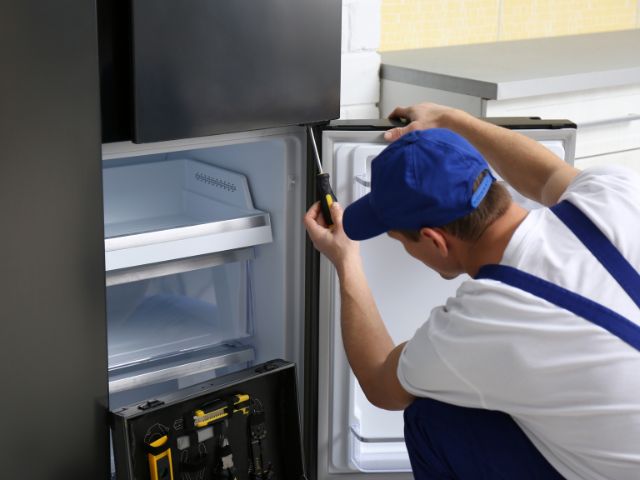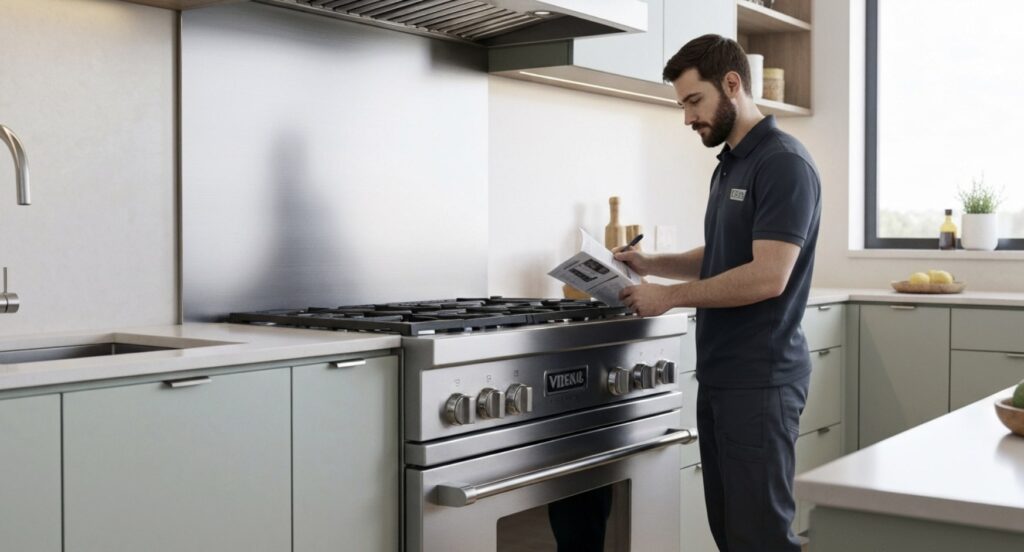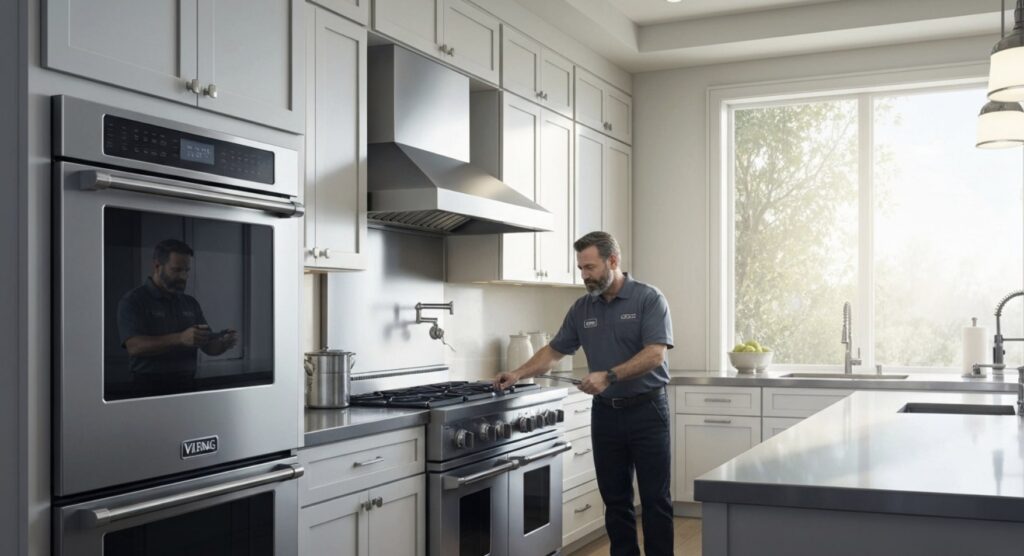The light inside your Viking oven is an important part of our kitchens, even though it is often ignored. It lights up the inside of the oven, so we can check on our dishes without opening the door. If the oven light breaks, it can be more than just annoying; it could also be dangerous. This guide will explain why oven lights matter, discuss common issues, outline how to replace them, and suggest ways to keep them working well. This way, you can enjoy your baking projects and see them clearly.
The Importance of Oven Light in Baking and Cooking
The oven light may seem like a minor component in your kitchen, but its role in baking and cooking is significant. A functioning oven light allows you to monitor the progress of your dishes without disrupting the cooking process by opening the oven door. This simple yet crucial feature can prevent heat loss, ensure even baking, and ultimately lead to better culinary outcomes. Understanding the importance of the oven light underscores why its maintenance and timely replacement are essential for any home cook or baker.
Enhancing Visibility and Safety in the Kitchen
A working oven light does more than help with cooking. It makes the kitchen safer. The light brightens up the inside of the oven. This lets you see hot dishes clearly, so you can grab them without getting burnt. This is very important when you are dealing with large or heavy pots because you need to see well to stay balanced and avoid spilling anything.
Also, a light in the oven helps you spot potential dangers. You can see spills, leftover food, or items that are out of place. Catching these problems early can stop them from turning into big issues, like fires or smoke damage. This safe practice makes your kitchen a secure place for everyone while cooking.
How Oven Light Affects Cooking Precision and Results
Achieving great cooking is all about timing and temperature control. Having a good oven light is very helpful for this. It allows cooks to watch their food as it cooks. This way, they can check if it is done just right. They can see important signs like browning, caramelizing, or puffing pastries. This helps to make sure that dishes taste and feel their best.
On the other hand, if there is no oven light, cooks have to guess. This can lead to undercooked or overcooked meals. It can also cause uneven heating. This shows how a well-lit oven creates a better cooking space. It helps cooks follow recipes closely and make consistently great food.
Identifying Common Oven Light Problems
Oven lights, like other electrical parts, can face problems. These issues can show up as sudden outages, flickering, or a constant dim light. It is important to find out the real cause of these issues for safe and effective problem-solving. Some problems, such as burnt-out bulbs, are easy to fix. However, others may need help from a professional to prevent electrical dangers.
Burnt-Out Bulbs: Signs and Causes
The most common issue with oven lights is a burnt-out bulb. You can tell the bulb is bad when the oven doesn’t light up at all. Bulbs can get dim over time, but if it goes out suddenly, that usually means the filament is broken. Some things can speed up this problem, like power surges, defects in the bulb, or too much shaking when you open the oven door.
Also, the high heat inside ovens can shorten the life of the bulb. Constant exposure to heat can ruin the filament and cause it to fail early. It’s important to use bulbs made for appliances, as these are designed to handle high temperatures.
Once you find a burnt-out bulb, you need to replace it. This is an easy job that most homeowners can do. Still, safety is very important. Always unplug the oven before changing the bulb to avoid the risk of electrical shocks.
Flickering Lights and Dimness: Troubleshooting Tips
A flickering or dim oven light can mean there is an electrical problem. This needs attention. Loose connections are often the cause. These can happen because of vibrations while the oven works. A quick and simple fix is to check if the bulb is tightly screwed into the socket.
If the light still does not work, other reasons might be a faulty door switch, wiring problems, or a broken control board. Here are some troubleshooting tips:
- Check the bulb: Make sure it’s tightly fitted and matches your oven model.
- Inspect the door switch: A bad switch might stop the light from getting power.
- Examine the wiring: Look for any loose, damaged, or worn out wires.
- Consult a professional: If you think the control board is the issue or if you do not feel comfortable checking electrical parts, it’s smart to call a qualified technician.
Selecting the Right Oven Light Bulb
Choosing the right light bulb for your oven is very important for safe and proper use. Regular bulbs can’t handle the heat and impacts like oven light bulbs can. If you use the wrong bulb, it might burn out quickly, cause electrical problems, or harm the oven’s wiring.
Always check your oven’s user manual or the maker’s website to find the correct bulb type, wattage, and voltage for your model. Picking the right bulb helps it work well and lasts longer, so you won’t need to replace it often.
Understanding Different Types of Oven Bulbs
Oven light bulbs come in various types, each with its own set of characteristics and advantages. Understanding these differences helps you select the most suitable option for your needs. The most common types include:
|
Bulb Type |
Description |
Advantages |
Disadvantages |
|
Incandescent |
Traditional bulbs with a filament |
Inexpensive, readily available |
Less energy-efficient, shorter lifespan |
|
Halogen |
Brighter and more energy-efficient than incandescent bulbs |
Longer lifespan, brighter light |
More expensive than incandescent |
|
LED |
Most energy-efficient and longest-lasting option |
Significantly lower energy consumption, exceptionally long lifespan |
Higher upfront cost |
While incandescent bulbs are the most budget-friendly option, their lower energy efficiency and shorter lifespan make them less appealing in the long run. Halogen bulbs offer a balance of brightness, efficiency, and lifespan, while LEDs are the most environmentally friendly and long-lasting choice, albeit at a higher initial cost.
Compatibility and Safety Considerations for Replacement Bulbs
When you choose a replacement bulb, it is very important to think about safety and compatibility. Using a bulb that has the wrong voltage or wattage can cause electrical problems and become dangerous. Always check the bulb details against your oven’s user manual or the manufacturer’s guidelines. Using bulbs that can’t handle high temperatures can cause overheating, melting, or fires inside the oven.
It’s best to buy oven light bulbs from trusted retailers or brands to make sure they meet quality and safety standards. Before you install the bulb, check for any damage. Do not use bulbs that have cracks, loose parts, or exposed wires, as these can be very unsafe. Remember, focusing on safety and compatibility when choosing a replacement bulb will help it work well and reduce potential risks.
Step-by-Step Guide to Replacing Your Oven Light
Replacing an oven light is a simple job that most homeowners can do easily. First and most importantly, you need to stay safe. It is very important to follow the right steps to avoid any electrical problems and to ensure things go well. Here’s how to do it step by step:
Preparing Your Oven for Light Replacement
Start by making sure the oven is turned off and unplugged from the wall. You can also turn off the circuit breaker. This is a very important safety step that helps avoid the chance of getting shocked. If you have used the oven recently, wait until it cools down completely. It’s important to check that any light bulb inside is cool, too, because a hot bulb can burn you.
Next, find the cover for the oven light. It is usually located on the back or the side wall inside the oven. The cover can be made from glass, metal, or ceramic. It may be fastened with screws, clips, or just twisted to lock in place. Look at your oven’s manual to get exact steps for removing the light cover for your specific model.
It is a good idea to wear gloves when you handle parts of the oven. They may have grease or leftover food on them.
Removing the Old Bulb Safely
With the light cover off, you will see the old bulb. Hold the bulb gently but firmly. Turn it to the left. Depending on the type of socket, you may need to push in a bit while turning. Do not use too much force, as this could break the bulb. If the bulb feels stuck, wear gloves for a better grip. You can also use a rubber jar opener to help it come loose. Once the bulb comes out, throw it away correctly. Remember, oven light bulbs are not usually recyclable, so follow your local rules for disposal. Now that you have removed the old bulb, you can put in the new one.
Installing the New Oven Light Bulb
Take the new oven light bulb and line it up with the socket. Do not touch the glass part of the bulb with your hands. The oil from your skin can harm the bulb and make it last less long. Hold the bulb by its metal base and turn it gently to the right until it fits snugly.
Be careful not to make it too tight, as this could hurt the socket or the bulb. Once the bulb is in place, put the light cover back on and make sure it is securely fastened. Now, turn the power back on to the oven by switching the circuit breaker or plugging the appliance back into the outlet.
Preventative Maintenance for Oven Lights
Extending the life of your oven light and stopping problems is easy. You just need to add some simple tasks to your routine. This will help keep your lights bright and make your cooking space safer.
Regular Checks and Cleaning Tips
Making quick checks of your oven light should be part of your regular cleaning routine. This is a smart way to take care of your oven. Look out for any signs that the light is dimming, flickering, or damaged. If you see these problems, fix them soon.
When you are cleaning the oven, don’t forget to clean the oven light cover. Grease and food splatters can build up on the cover. This can make the light less bright. Use a damp cloth with a gentle cleaner to wipe the cover. Make sure it’s dry before you put it back on. This stops it from sticking or getting damaged.
Keeping up with this task helps to prevent unexpected oven light problems. It also helps to make the bulb last longer.
When to Seek Professional Help for Oven Light Issues
Replacing a burnt-out oven light bulb is an easy task you can do yourself. However, some oven light problems may need help from a trained appliance technician like Viking Appliance Repair Pros. If you’ve tried fixing it by changing the bulb and checking the connections but still see the issue, it’s best to get a professional.
For example, if you smell something burning, have ongoing electrical issues, or think there is a problem with the oven’s wiring or control panel, trying to fix it yourself could be unsafe. It’s better to call a licensed technician. This way, the issue can be diagnosed right and fixed safely. This will help avoid any risks and stop your oven from getting worse.
Conclusion
In conclusion, learning why oven light matters is vital. It helps you see what you’re cooking and keeps your kitchen safe. To keep your oven light working well, know about common problems. Choose the right replacement bulb and follow easy steps to replace it. Regularly check and clean your oven light, and know when to call a professional if needed. This will help your oven light last longer. For more tips on oven care, visit our blog: Top 10 Viking Oven Maintenance Tips For Smooth Operation. A well-maintained oven light makes cooking easier every time.
Frequently Asked Questions
Can I use any light bulb in my oven?
No, using any light bulb in your oven can be risky. Oven light bulbs are made to handle high heat. Using the wrong bulbs can cause them to melt, break, or even start a fire.
How often should I replace my oven light bulb?
Oven light bulbs usually last about 3 to 6 months when you use them regularly. It is best to change them if you notice them getting dim or flickering. You should also think about replacing them at least once a year to keep them working well.
What do I do if the oven light keeps burning out?
If your oven light goes out often, it might mean there is a bigger problem, like a bad door switch or issues with the wiring. It is a good idea to call a skilled appliance technician. They can find the problem and fix it for you.
Are LED bulbs suitable for oven use?
Yes, LED bulbs made for oven use are safe. They have a long lifespan and save energy. Just make sure they match your oven’s specifications.







